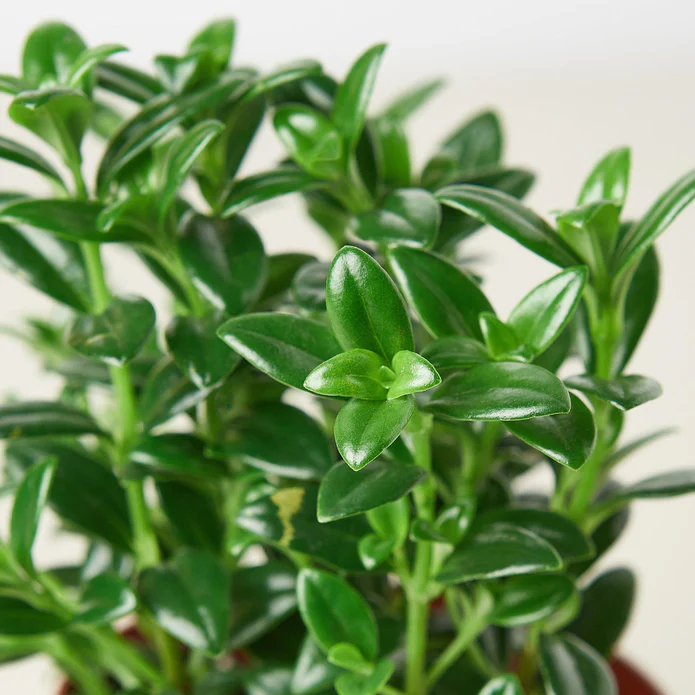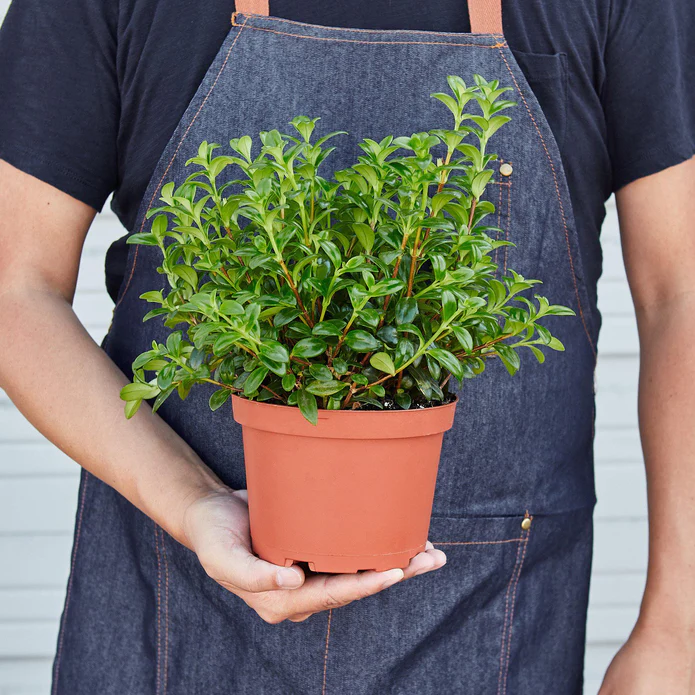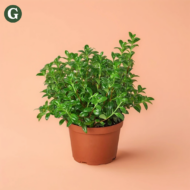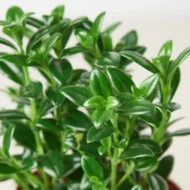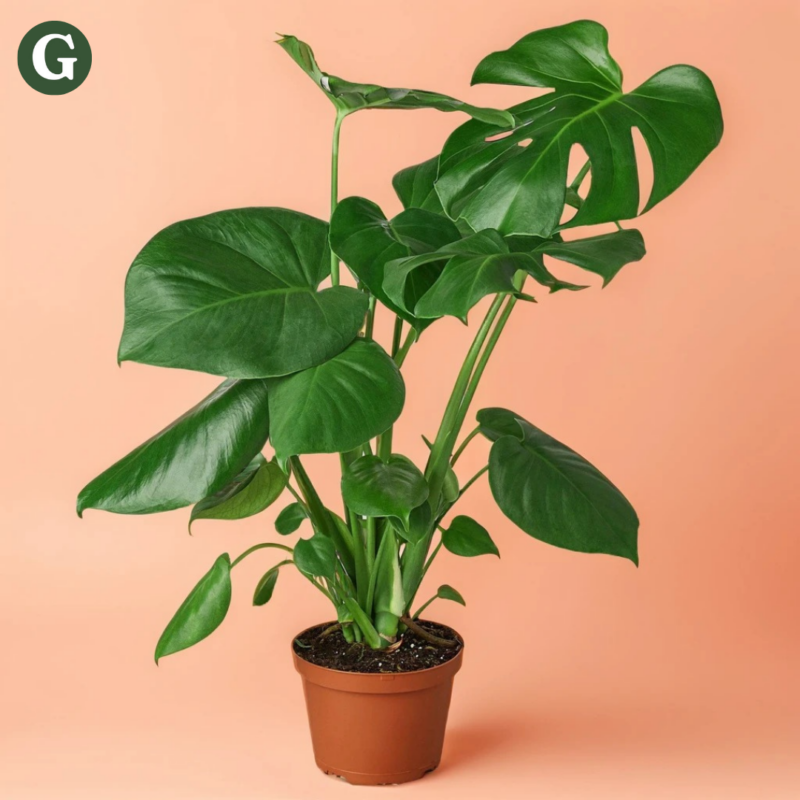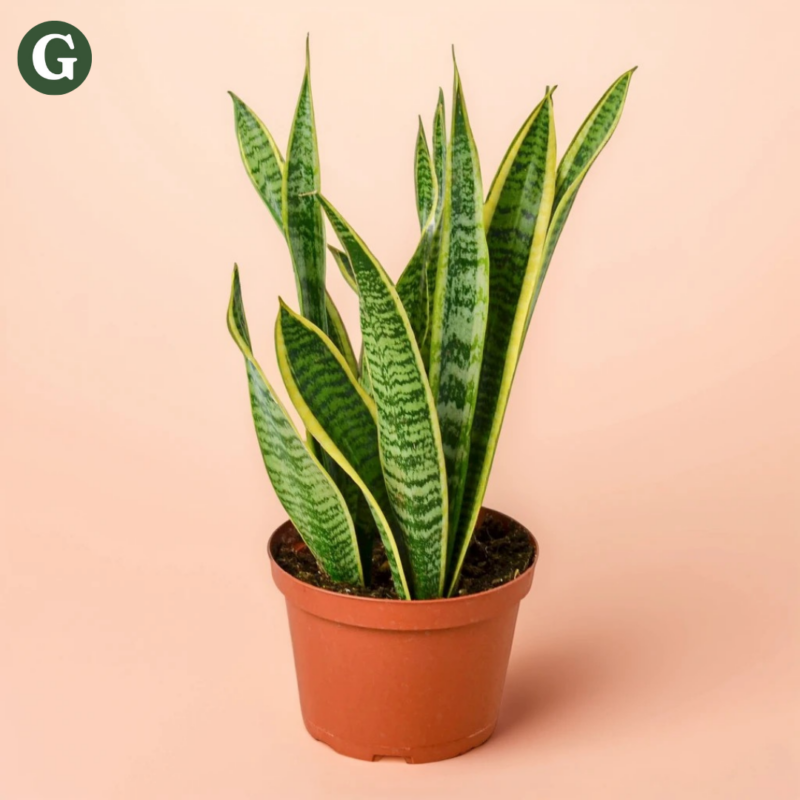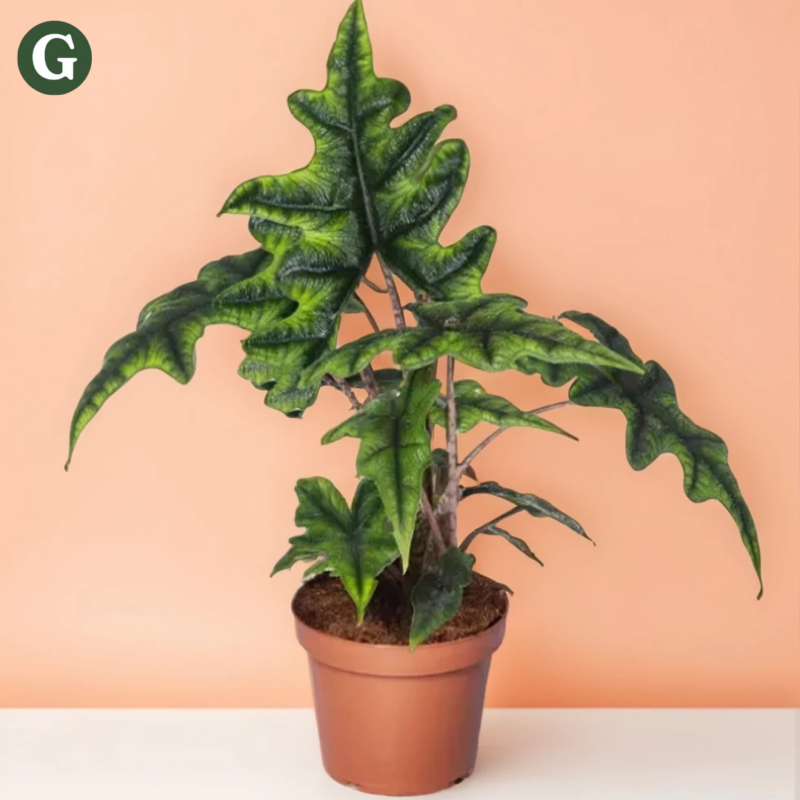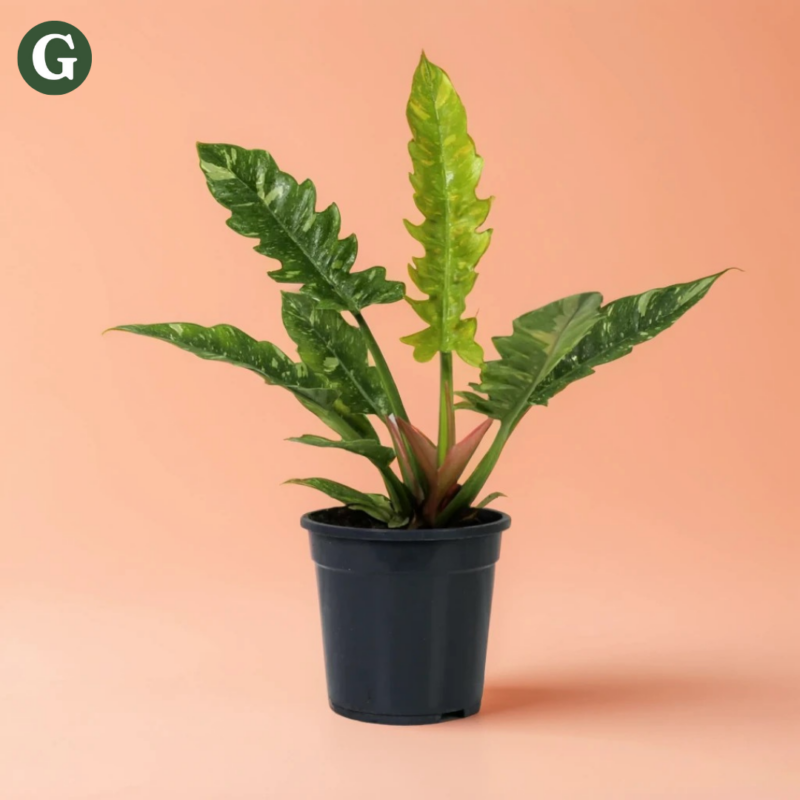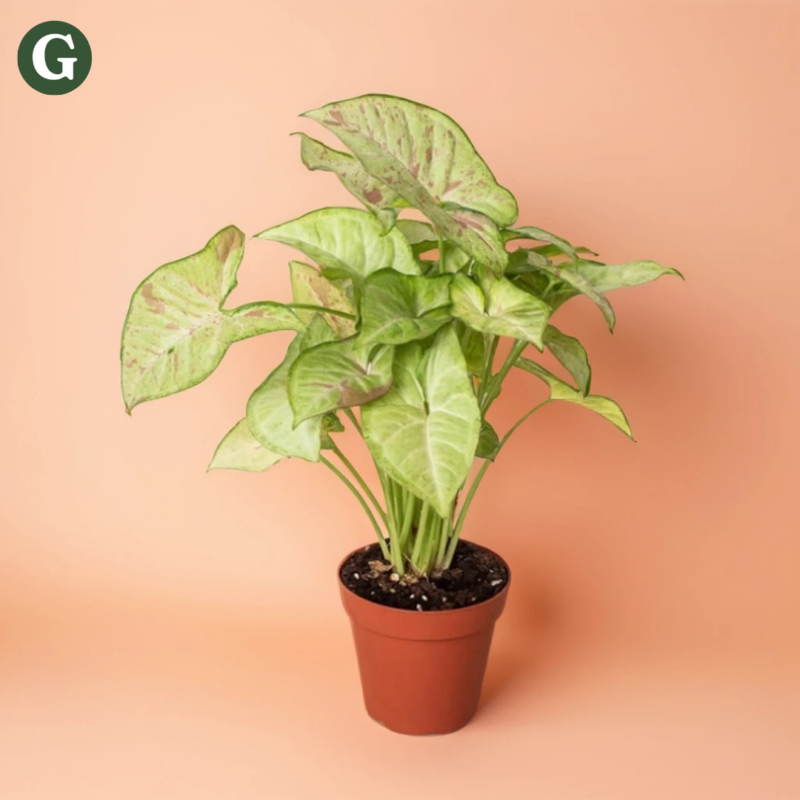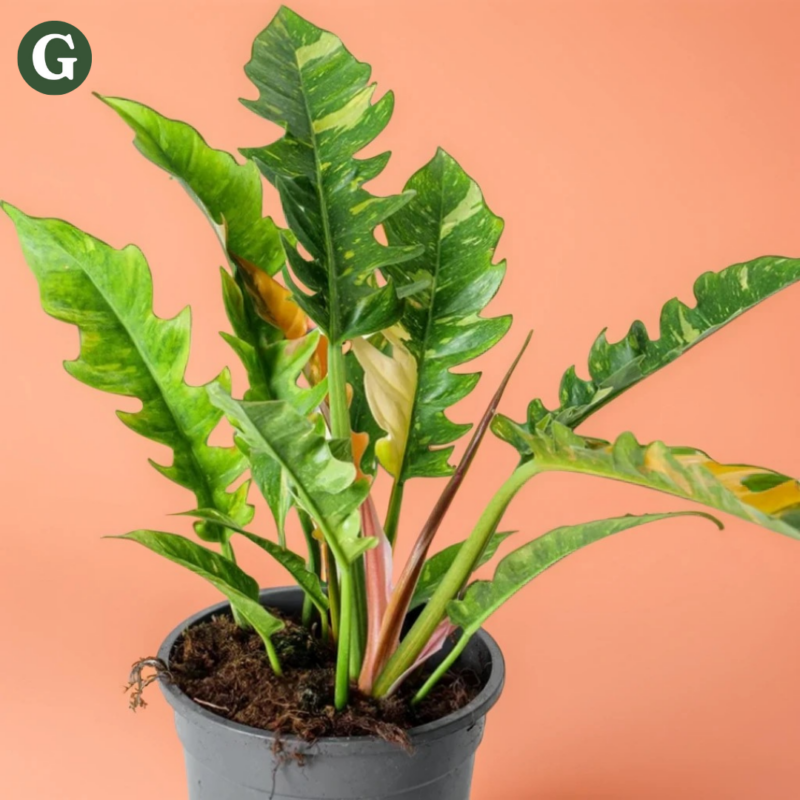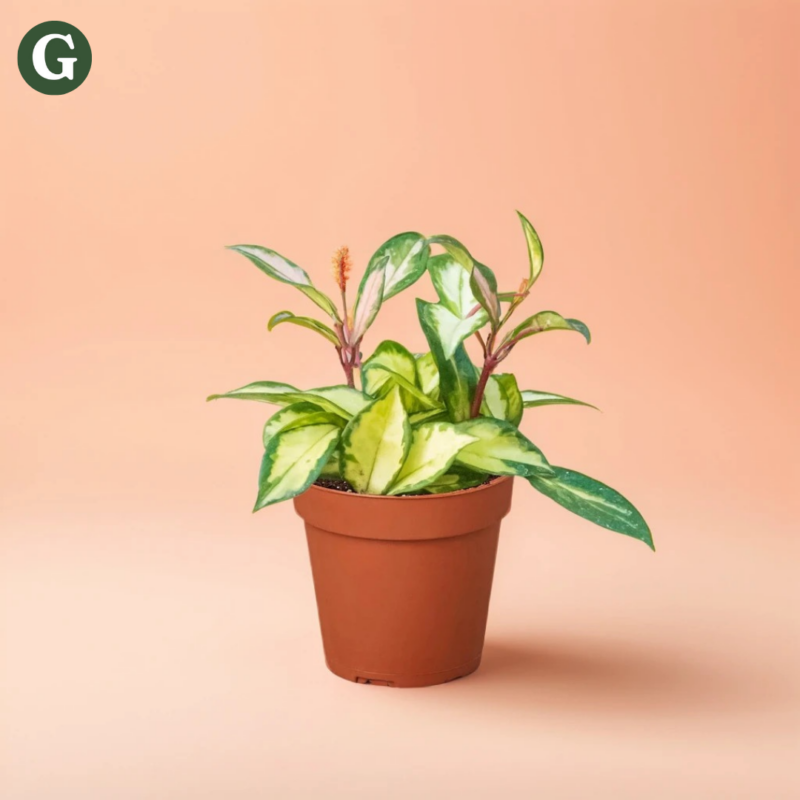Nematanthus ‘Brazilian Firecracker’
Botanical Name: Nematanthus sp. 'Brazilian Firecracker'
Common Name(s): Brazilian Firecracker Plant, candy corn plant, goldfish plant, gubby plant
The Brazilian Firecracker Plant is a striking tropical plant known for its vibrant, tubular orange-red flowers that resemble small firecrackers, giving it its fiery name. Native to the rainforests of Brazil, this trailing plant features glossy, dark green leaves that provide a beautiful backdrop for its brilliant flowers, which bloom in clusters. Its trailing vines make it an ideal choice for hanging baskets or containers, where the plant can cascade down or climb with support.
The Brazilian Firecracker Plant thrives in bright, indirect light, but it can tolerate moderate light conditions as well. It prefers well-draining soil that remains slightly moist, so it’s important to water when the top inch of soil feels dry. Regular misting or placing the plant in a humid area will encourage better growth, as it appreciates high humidity levels akin to its native tropical habitat.
Air Purifying Qualities: While specific studies on the air-purifying abilities of Nematanthus species are limited, like many houseplants, the Brazilian Firecracker Plant helps contribute to improved air quality by absorbing carbon dioxide and releasing oxygen, which can lead to a fresher indoor environment.
Note: The Brazilian Firecracker Plant is generally considered non-toxic to pets, making it a safe option for households with animals. However, as always, it's a good idea to monitor pets to prevent any chewing on the leaves.
Care Insights & Expert Tips
- Fertilizing Needs: Feed monthly during spring and summer with a balanced, diluted liquid fertilizer to encourage blooms. Reduce fertilizing in fall and stop altogether in winter.
- Pruning Tips: Prune lightly after flowering to maintain shape and encourage bushier growth. Use sterilized scissors to remove leggy or damaged stems.
- Repotting Frequency: Repot every 2-3 years, preferably in spring, using a well-draining potting mix.
- Pest Management: Monitor for pests like aphids and spider mites, which are attracted to the flowers. Treat infestations with neem oil or insecticidal soap if needed.

Visit our plant care library
Find essential tips to keep your plants thriving, vibrant, and healthy.

